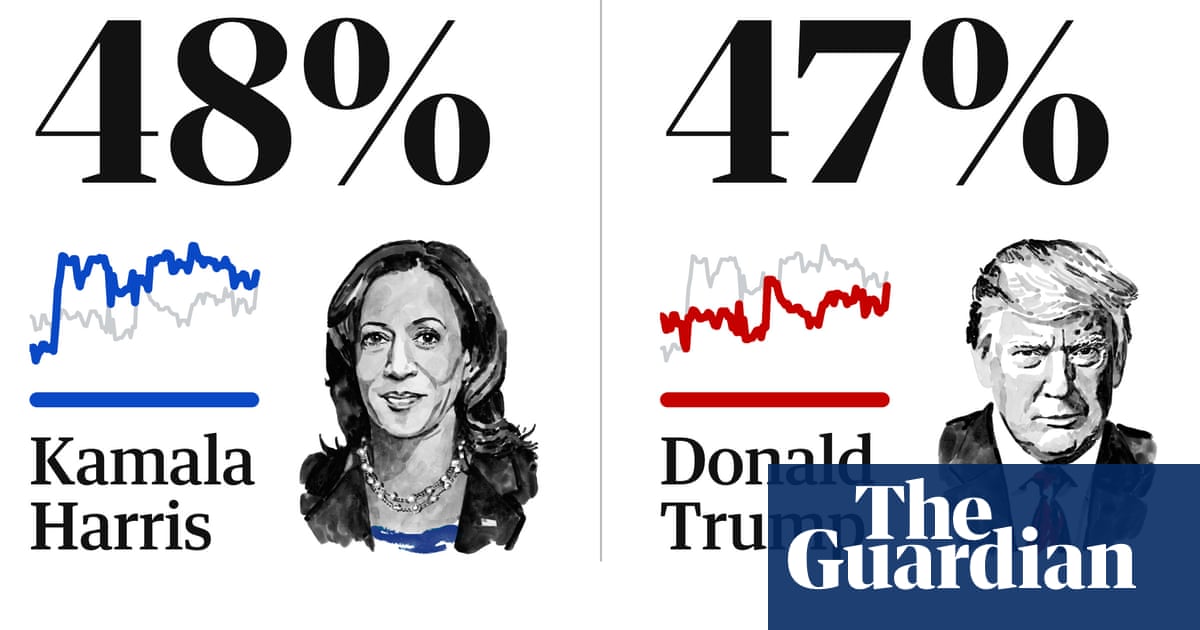On 5 November 2024, millions of Americans will head to the polls to choose between Kamala Harris and Donald Trump for president of the United States. The two candidates have offered starkly different visions for the future of the nation. As the election enters the final stretch, the Guardian US is averaging national and state polls to see how the two candidates are faring.
Latest polls
Polling average over a moving 10-day period
Guardian graphic. Source: Analysis of polls gathered by 538.
See all polling
Latest analysis: Nationally, Harris has a one-point advantage, 48% to 47%, over her Republican opponent, virtually identical to last week. Such an advantage is well with the margin of errors of most polls. The battleground states, too, remain in a dead heat.
But in a fractured political landscape that has featured threats of retribution from Trump, accusations of fascism and racism from Harris, and warnings that democracy itself is on the ballot, the bigger picture – that uniformity, over a prolonged period – has seasoned observers scratching their heads.
– Robert Tait, 2 November
Read more
Polling over time
Polling average over a moving 10-day period. Each circle represents an individual poll result and is sized by 538’s pollster rating
Notes on data
To calculate our polling averages, Guardian US took a combination of head-to-head and multi-candidate polls and calculated a rolling 10-day average for each candidate. Our tracker uses polls gathered by 538 and filters out lower-quality pollsters for national polls. Our state polling averages use a lower quality threshold for inclusion due to the small numbers of state polls. If there were no polls over the the 10-day period, we leave the average blank. On 11 Oct Guardian US began rounding averages to the nearest whole number to better reflect the lack of certainty in the polling figures.
Polling averages capture how the race stands at a particular moment in time and are likely to change as the election gets closer. Averages from states with small numbers of polls are also more susceptible to errors and biases. Our averages are an estimate of the support that the candidates have in key swing states and on the national stage. The election is decided by the electoral college, so these averages should not be taken as a likelihood of winning the election in November.
Read more about the US election:








